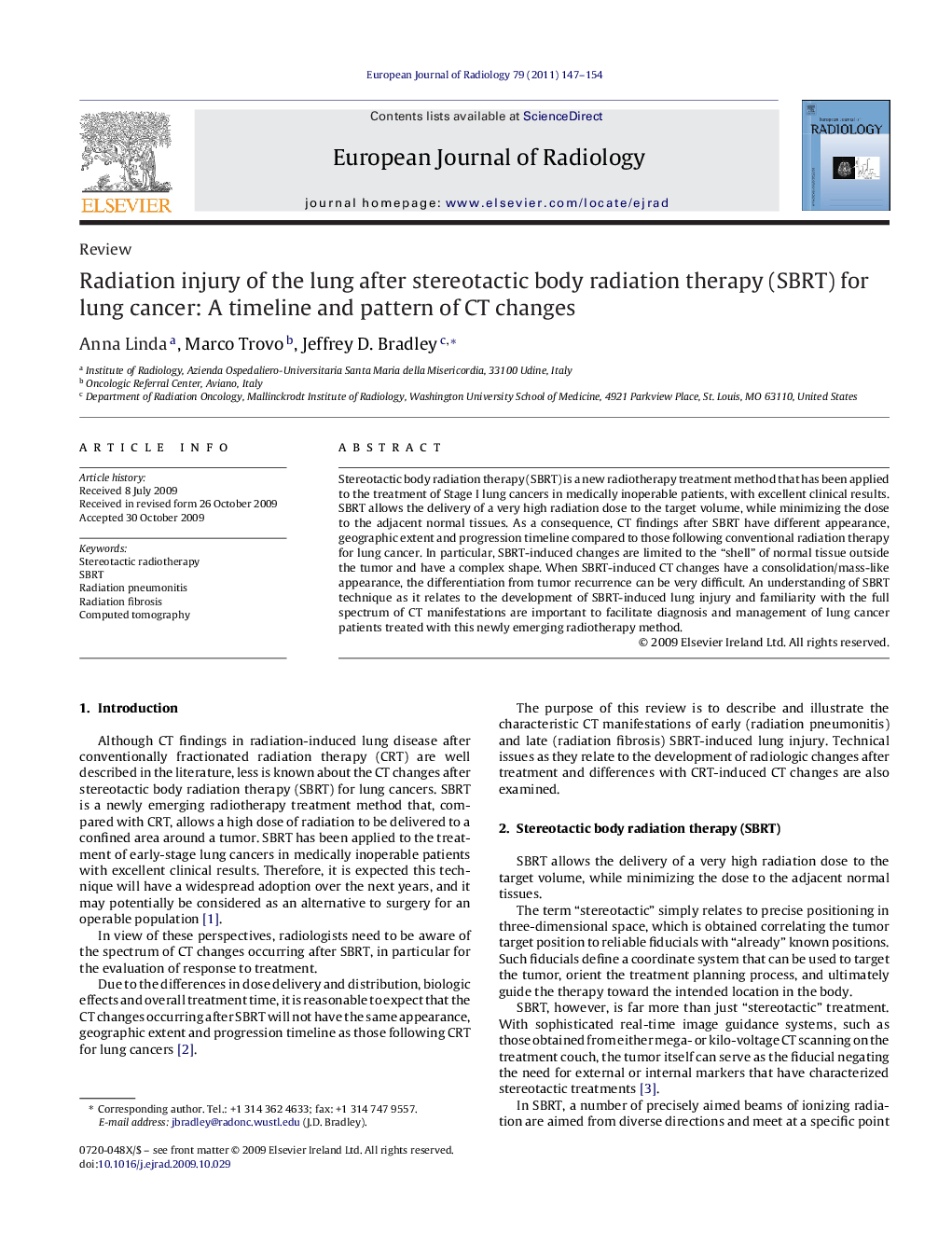| Article ID | Journal | Published Year | Pages | File Type |
|---|---|---|---|---|
| 4226939 | European Journal of Radiology | 2011 | 8 Pages |
Stereotactic body radiation therapy (SBRT) is a new radiotherapy treatment method that has been applied to the treatment of Stage I lung cancers in medically inoperable patients, with excellent clinical results. SBRT allows the delivery of a very high radiation dose to the target volume, while minimizing the dose to the adjacent normal tissues. As a consequence, CT findings after SBRT have different appearance, geographic extent and progression timeline compared to those following conventional radiation therapy for lung cancer. In particular, SBRT-induced changes are limited to the “shell” of normal tissue outside the tumor and have a complex shape. When SBRT-induced CT changes have a consolidation/mass-like appearance, the differentiation from tumor recurrence can be very difficult. An understanding of SBRT technique as it relates to the development of SBRT-induced lung injury and familiarity with the full spectrum of CT manifestations are important to facilitate diagnosis and management of lung cancer patients treated with this newly emerging radiotherapy method.
